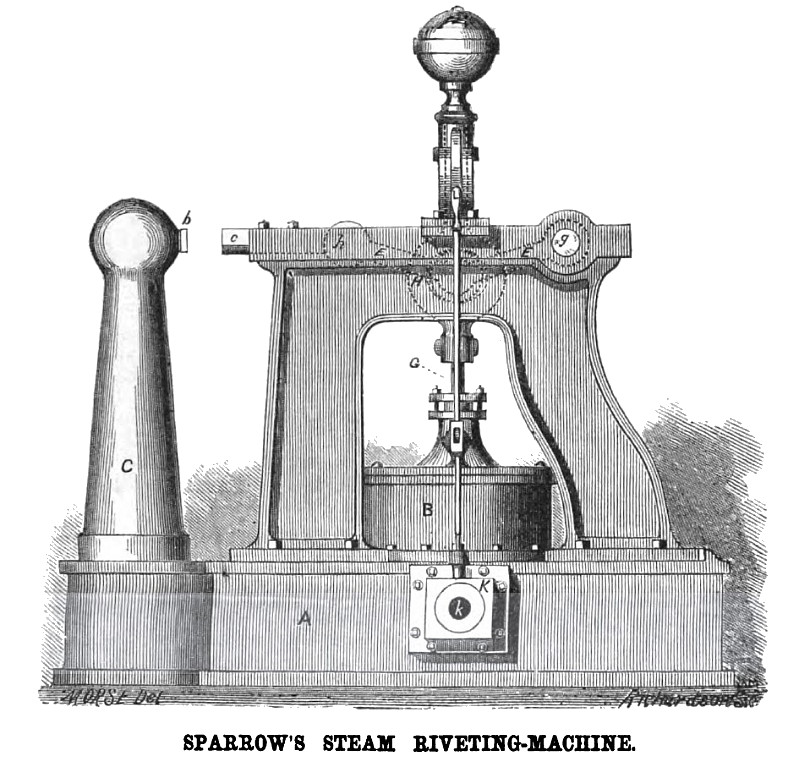|
Title: |
1859 Article-Portland Co., Sparrow's Steam Riveting Machine |
|
Source: |
Scientific American, V1, #20, 12-Nov 1859, pg. 316 |
|
Insert Date: |
8/1/2019 8:22:22 PM |
It is doubtful if the labor which is now done in hammering, planing, turning, cutting, punching, and riveting iron, by steam and water power, could be performed by the efforts of all the inhabitants of the country if their whole labor were directed into this channel. The properties of the metals adapt them peculiarly to be operated upon by machinery. They are so rigid that they can be handled by machinery with great precision, while their hardness demands the aid of the great forces of nature in cutting and shaping them. Numerous machines have consequently been invented for working iron and other metals, and no doubt new ones will continue to be invented for hundreds of. years to come, for "perfection" has not yet been written upon any of the works of man. One step in this long series of improvements is illustrated in the accompanying engraving.
It is a machine for riveting bolts, and for punching and cutting iron, and consists simply of a toggle press acted upon directly by the piston of a steam-cylinder. The rivet to be. headed is placed between the die, b, and the horizontal slide, c. The steam-cylinder, B, is open at the upper end, the steam entering through the pipe, k, and steam-chest, K, and acting on the underside only of the piston. The cross-head, H, of the piston-rod, G, has an elliptical opening or slot through which, in a friction-roller, passes the pin which connects the toggle with the piston-rod. The two arms, E E, of the toggle are forked, one to receive the piston-head, and the other embracing both the piston-head and its fellow toggle. Fastened rigidly to the piston-head is a rod extending in an exact line with the piston-rod upward into a vertical guide, to retain the piston in its true line of motion. L, is the lever for opening and closing the valve.
The principal advantages claimed for this machine are:—First, that it requires a comparatively small cylinder; second, the pressure can be regulated at will and retained upon the rivet until the rivet is well set; third, it is portable and, with the addition of a small boiler, may be set apart from any connection with the power or boilers of an establishment; fourth, steam is only required to do the work, acting on only one side of the piston, the weight of the piston bringing back the parts to their places.
The patent was issued (through the Scientific American Patent Agency) Sept. 27, 1859, and inquiries for further information may be addressed to the inventor, John Sparrow, superintendent of the Portland Company's Locomotive Works, Portland, Maine.
US Patent: 25,588
http://datamp.org/patents/displayPatent.php?number=25588&typeCode=0 |
|
 1859 Portland Co., Sparrow's Steam Riveting Machine
1859 Portland Co., Sparrow's Steam Riveting Machine
|
|